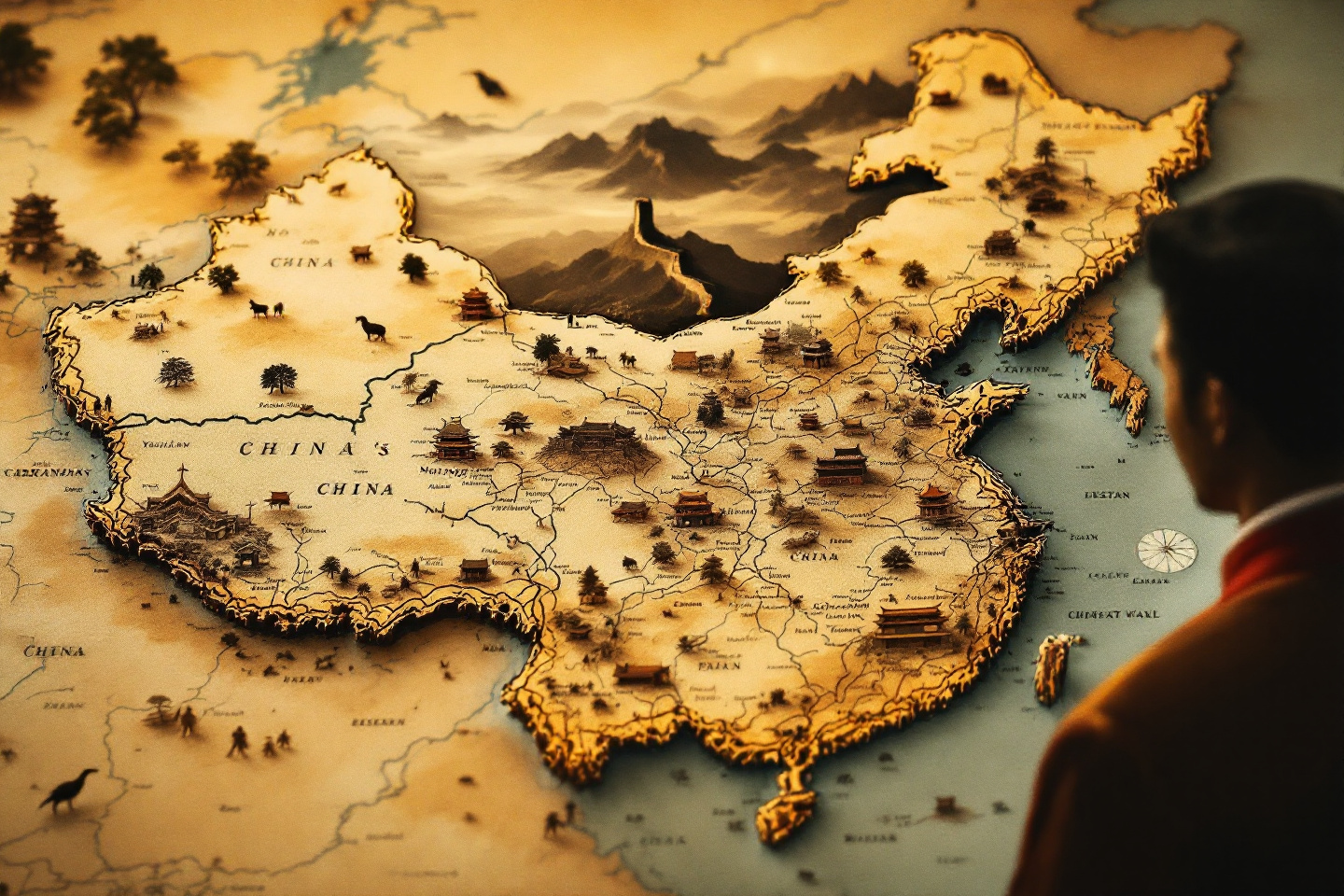China, the world’s oldest continuous civilization, was not always a single, unified entity. Its vast territory and diverse ethnic groups could have led to fragmentation, similar to Europe or the Indian subcontinent. Yet, China became a remarkably homogeneous nation in language, culture, and governance. What forces shaped this unity? How did geography, political structures, and early historical choices forge a cohesive Chinese identity?
The Role of Geography: A Land Made for Unity
In China’s case, the physical landscape encouraged political and cultural unification:
- The Yellow and Yangtze Rivers: These major river systems facilitated the spread of agriculture, trade, and governance. They connected distant regions, allowing rulers to integrate new territories effectively.
- The North China Plain: Unlike Europe, which is divided by mountains and peninsulas, China’s core region is relatively flat and well-connected. This made it easier for centralized control to spread.
- Natural Borders: Deserts, mountains, and seas acted as barriers against major invasions, keeping external influences at bay and allowing internal cultures to consolidate.
Early Agricultural Advantage
China’s early mastery of agriculture played a crucial role in its unity:
- Millet and Rice Cultivation: Early Chinese civilizations developed agriculture in the fertile Yellow and Yangtze River basins, creating surplus food that supported growing populations.
- High Population Density: With stable food supplies, China developed large populations concentrated in the same geographical area, reinforcing shared cultural practices.
- Domesticated Animals and Silk Production: Livestock, silkworms, and early technological advancements created economic interdependence among different regions, encouraging them to remain united rather than fragmented.
“A nation that feeds itself together, stays together.”
The Qin Dynasty’s Lasting Impact
China’s political unification was not just a result of geography; it was enforced through military conquest and administrative efficiency.
- The Warring States Period: For centuries, China was divided into multiple warring kingdoms. However, this era of division ended with the rise of the Qin Dynasty in 221 BCE.
- Qin Shi Huang’s Conquests: The first emperor of China, Qin Shi Huang, forcibly unified China through brutal wars but left an enduring legacy of centralized rule.
- Standardization of Language and Infrastructure: The Qin Dynasty established a uniform script, currency, and measurement systems, which facilitated trade and communication across vast distances.
- The Great Wall: To protect against northern invasions, the construction of the Great Wall further solidified territorial integrity and national identity.
Language and Culture: The Invisible Glue of China’s Identity
- Standardized Writing System: Unlike Europe, where different languages evolved separately, China maintained a single writing system that allowed communication across dialects.
- Confucianism and Centralized Education: The adoption of Confucian principles reinforced a common moral and philosophical framework. A standardized education system ensured that bureaucrats, scholars, and officials shared the same worldview.
- Cultural Homogeneity Through Governance: Dynastic rulers consistently promoted a unified Chinese identity through policies that absorbed local cultures rather than allowing regional autonomy.
“A shared language is not just words; it is the soul of a civilization.”
The Contrast with Europe
- Fragmented Geography in Europe: Unlike China’s vast, connected plains, Europe’s mountains, islands, and peninsulas created natural divisions that encouraged political fragmentation.
- Different Political Evolution: While China saw repeated unification under strong dynasties, Europe remained divided into competing nation-states.
- Diverse Language Development: In Europe, Latin splintered into many languages, while in China, the written language remained largely the same.
The Lasting Legacy of Chinese Unification
Today, China’s historical path to unity continues to shape its modern political and cultural landscape. Its ability to integrate diverse regions under one identity has allowed it to emerge as a global power. Understanding the forces that made China Chinese helps us appreciate the deep historical roots behind one of the world’s most influential civilizations.



